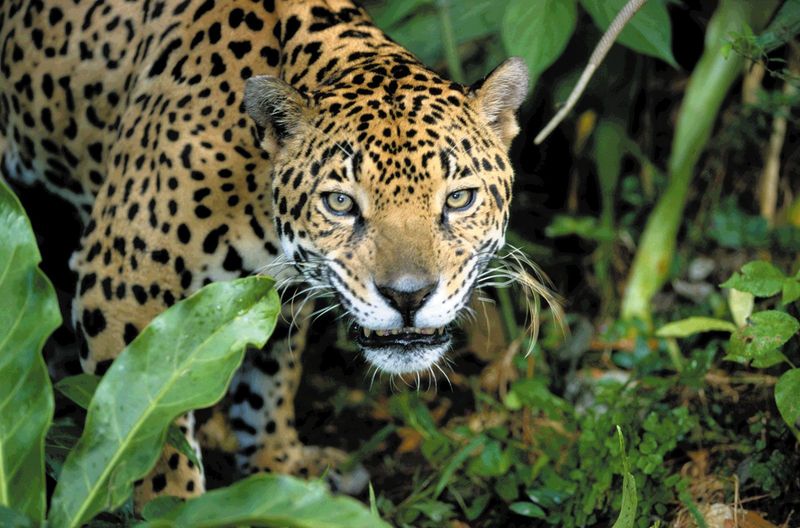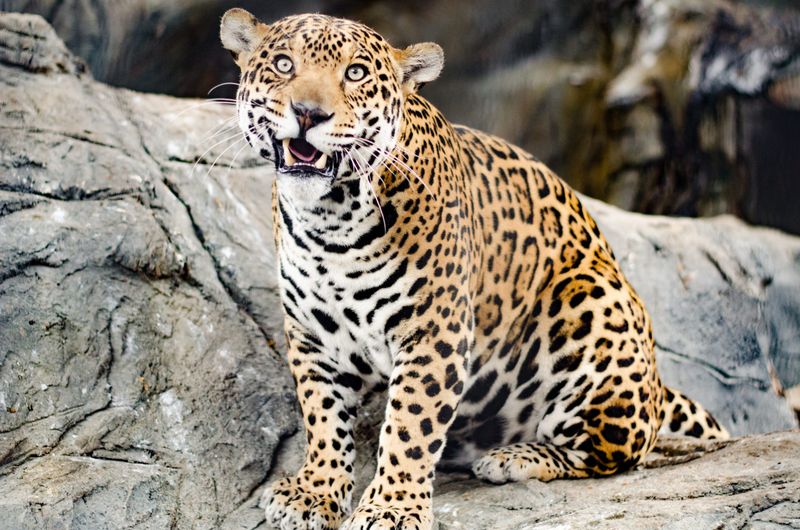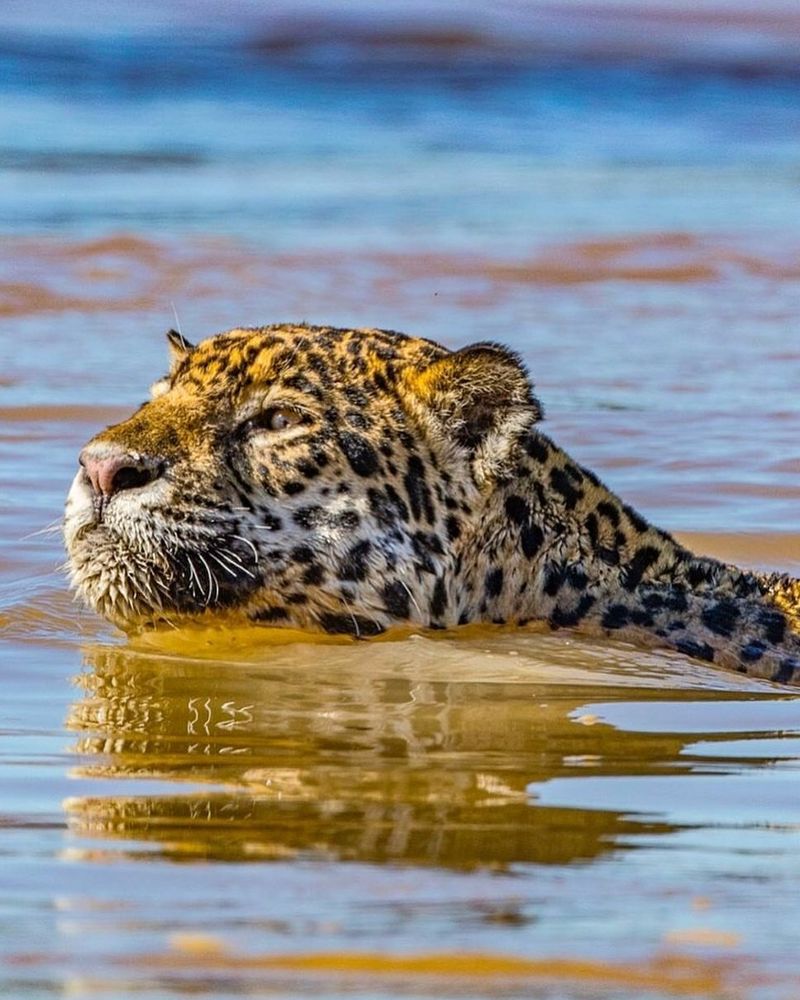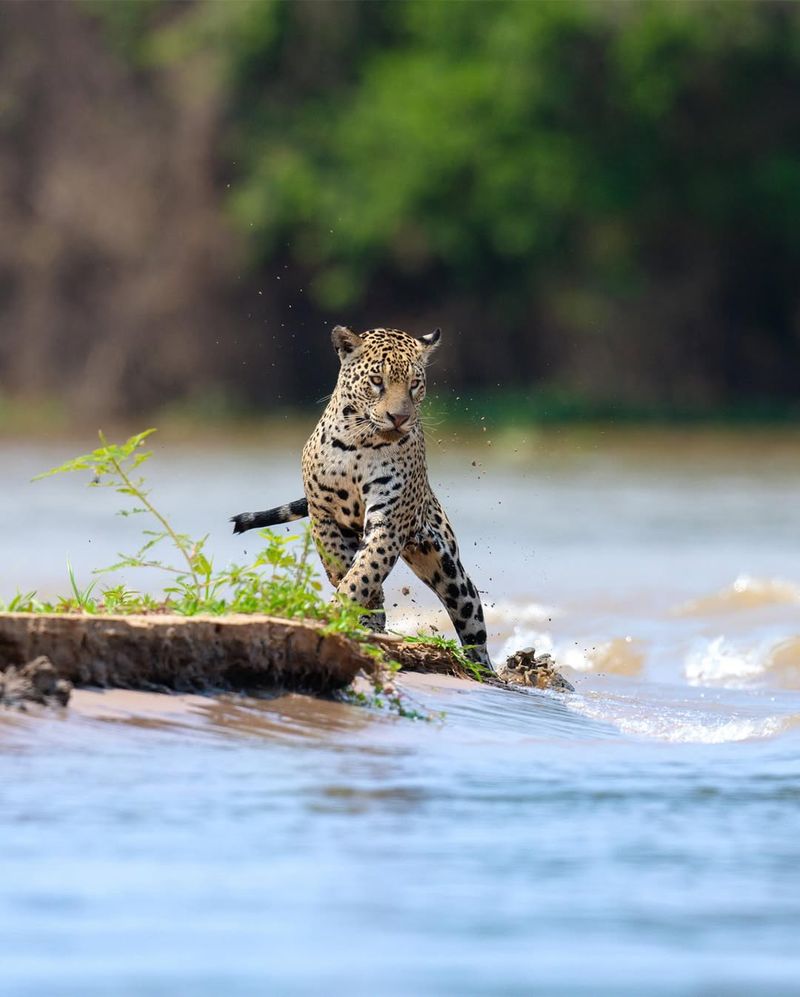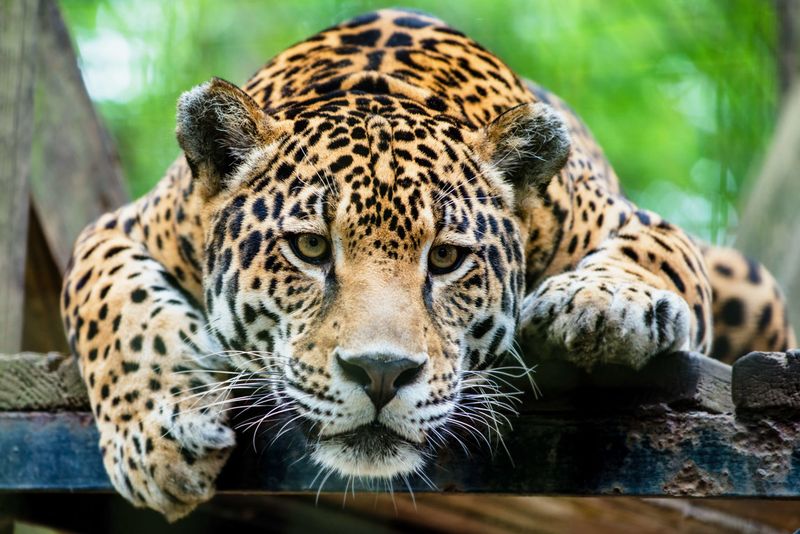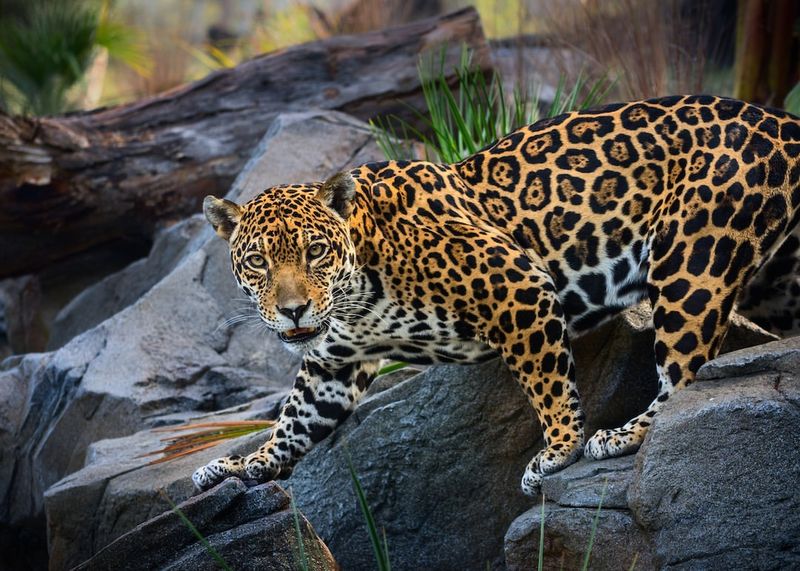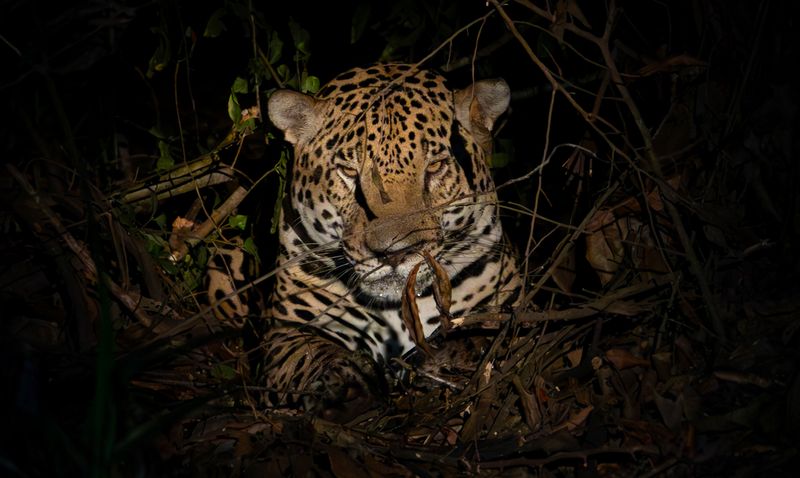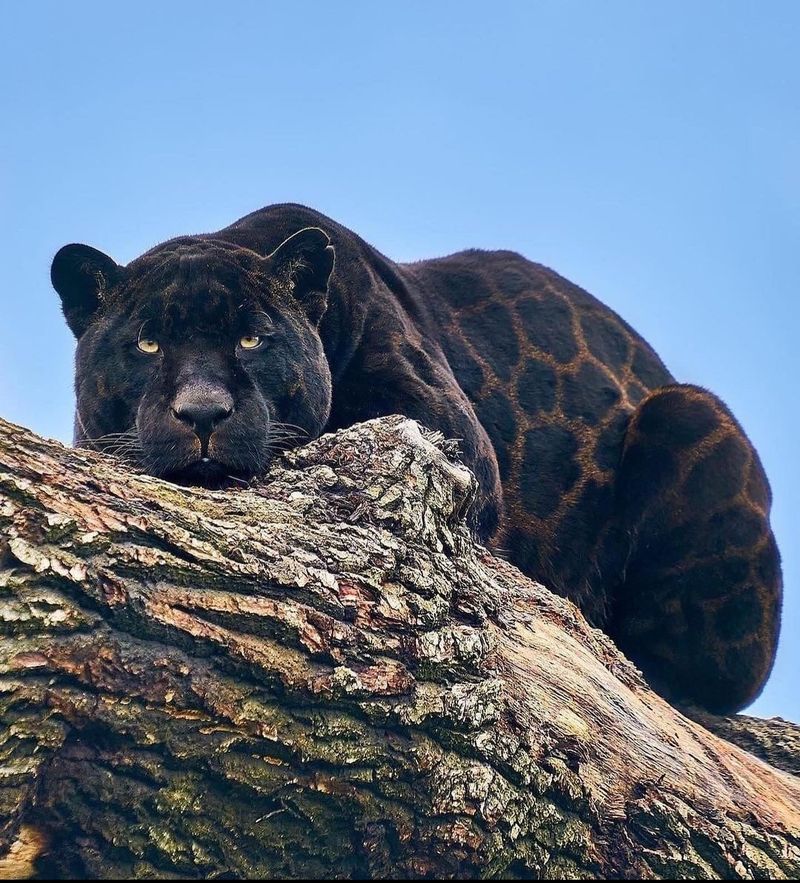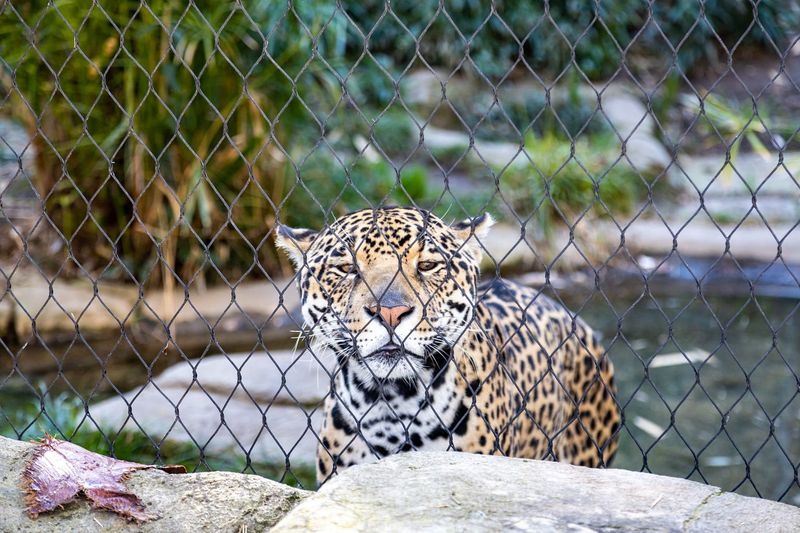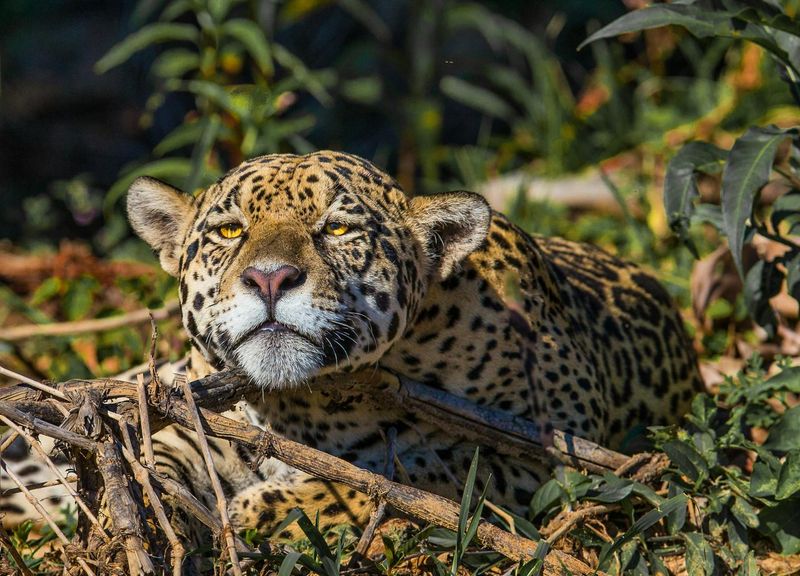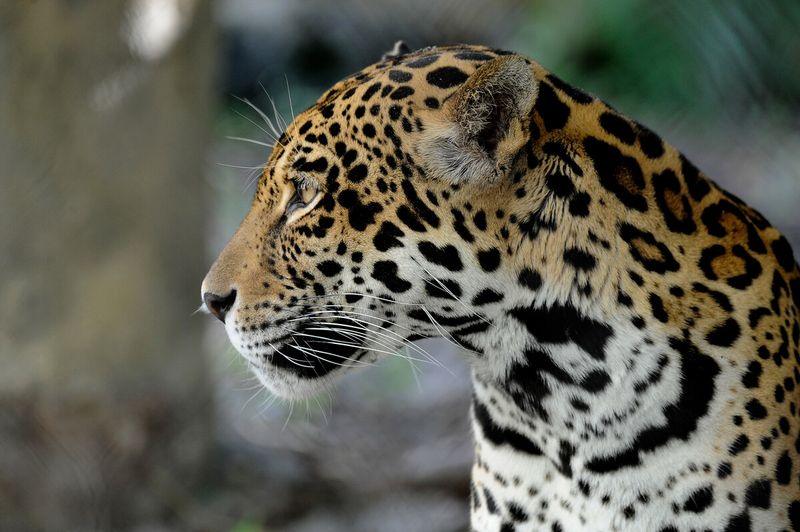📖 Table of Content:
- 1. Third Largest Cats
- 2. Unique Spot Patterns
- 3. Exceptional Swimmers
- 4. A Powerful Bite
- 5. Solitary Hunters
- 6. Vocal Communication
- 7. Cultural Significance
- 8. Ecosystem Role
- 9. Habitat Adaptability
- 10. Secretive Nocturnal Habits
- 11. Color Variations
- 12. Jaguars in Captivity
- 13. Threats in the Wild
- 14. Territorial Behavior
- 15. Jaguars in Mythology
Jaguars are one of the most awe-inspiring big cats in the wild, renowned for their power and grace. Their distinctive coat patterns and muscular build set them apart from other large felines. Despite their widespread recognition, many fascinating traits and behaviors of jaguars remain lesser known.
These elusive creatures are not only a symbol of strength but also hold an important place in various ecosystems. From their solitary nature to their impressive hunting skills, jaguars are a testament to the mysteries of the wild. Their unique adaptations and survival strategies are a wonder to explore.
With so many aspects of their lives still shrouded in mystery, jaguars continue to captivate wildlife enthusiasts. Learning more about them provides insight into the delicate balance of nature and the complexity of these incredible animals. Let’s take a deeper look at 15 intriguing facts that highlight just how extraordinary jaguars truly are.
1. Third Largest Cats
Jaguars are the third largest cats in the world, after tigers and lions. This gives them a commanding presence in the animal kingdom. They possess a robust build, with males weighing between 100 to 250 pounds. Their powerful physique allows them to take down prey much larger than themselves.
With their strong limbs and sharp claws, jaguars are adept climbers and swimmers. They are often found in rainforests, savannas, and grasslands across the Americas. This adaptability ensures their survival in various habitats. Their striking rosettes and golden coats make them one of the most visually stunning big cats.
2. Unique Spot Patterns
Each jaguar has a unique spot pattern, similar to human fingerprints. These rosettes, with a central spot inside, are unique to each individual and help researchers identify them in the wild.
These markings not only add to their beauty but also serve a practical purpose. They provide excellent camouflage in their natural habitat, allowing jaguars to stalk prey without being detected. This remarkable adaptation is crucial for their hunting success. Observing these patterns up close reveals the intricacy and variation, making each jaguar an artistic marvel of nature.
3. Exceptional Swimmers
Unlike most big cats, jaguars excel in the water. Their powerful legs and webbed paws help them glide through rivers and lakes with remarkable ease. This aquatic prowess gives them access to a diet that includes fish and even caimans.
Their affinity for water sets them apart from their feline relatives. Jaguars often cool off in rivers and lakes during the hot days in the rainforest. This behavior is not just for hunting; it’s also a way to escape the heat. Their swimming prowess illustrates their adaptability and resourcefulness in the wild.
4. A Powerful Bite
When it comes to bite force, jaguars hold the title of the strongest among big cats. Their powerful jaws can break through the skulls and shells of their prey with ease. This biting prowess is vital for capturing tough prey like turtles.
Jaguars use a unique killing method, targeting the skull of their prey rather than the neck. This precise technique showcases their incredible strength and hunting strategy. This powerful bite is not just about strength, but also about efficiency. It ensures that their prey is taken down swiftly, minimizing struggle and energy expenditure.
5. Solitary Hunters
Known for their solitary behavior, jaguars prefer to roam and hunt alone. They claim vast territories, marking and defending them to minimize competition for food. As nocturnal creatures, they use the night to hunt with stealth, making them effective predators.
Their ability to remain undetected in the dense rainforest is a testament to their skill as hunters. Observing a jaguar on the prowl is witnessing a master of stealth in action.
6. Vocal Communication
Jaguars communicate through a range of vocalizations, including roars, grunts, and meows. Their roar is known as a ‘saw,’ a repetitive vocalization that can be heard over long distances. These sounds serve various purposes, from marking territory to attracting mates. Their vocal abilities are an essential part of their social interactions, despite being solitary creatures.
The jaguar’s vocal prowess is a reminder of the complex social lives of these enigmatic cats. Hearing a jaguar roar in the wild is an unforgettable experience, highlighting their presence in the vast wilderness.
7. Cultural Significance
Jaguars hold significant cultural importance in various indigenous cultures of the Americas. They are often seen as symbols of power, strength, and the mystical world. In ancient Aztec and Mayan cultures, jaguars were revered and often associated with deities.
These majestic creatures appear in various art forms, from pottery to murals, symbolizing the connection between humans and nature. The jaguar’s role in these cultures highlights the deep respect and reverence people have for this powerful predator. Their cultural significance continues to influence modern art and storytelling, maintaining their legacy.
8. Ecosystem Role
Serving as apex predators, jaguars play a critical role in their ecosystems. By controlling herbivore numbers, they prevent vegetation from being overgrazed, ensuring the ecosystem remains balanced. This natural regulation contributes to biodiversity, helping other species thrive in a healthy environment.
Protecting jaguars means preserving the intricate web of life in the ecosystems they inhabit. Their role as keystone species underscores the importance of conservation efforts.
9. Habitat Adaptability
Known for their adaptability, jaguars can thrive in diverse habitats, including rainforests and arid scrublands. This remarkable flexibility helps them survive in many regions of the Americas. By adjusting to different environments, they can access various food sources while avoiding human interference.
Conservation efforts focus on protecting these diverse habitats to ensure jaguars continue to roam freely. Their adaptability is a testament to nature’s ability to overcome challenges and persist.
10. Secretive Nocturnal Habits
Jaguars are primarily nocturnal animals, active during the night when they hunt and patrol their territories. Their secretive nature makes them elusive and challenging to study in the wild.
Being active at night provides jaguars with the cover of darkness, enhancing their stealth and hunting success. This nocturnal lifestyle allows them to avoid the heat of the day and reduce encounters with humans. Their mysterious behavior adds to their allure, making them one of the most captivating creatures in the animal kingdom. Encountering a jaguar in the wild is a rare and thrilling experience.
11. Color Variations
While most jaguars are known for their golden coats with black rosettes, some exhibit a rare color variation known as melanism. These black jaguars, often called black panthers, have a unique and striking appearance.
Melanistic jaguars are not a separate species but rather a genetic anomaly that affects their coloration. Despite their dark appearance, the rosettes are still visible in certain lighting. This color variation intrigues scientists and adds to the mystique surrounding these big cats. It also highlights the genetic diversity within the jaguar population.
12. Jaguars in Captivity
In controlled environments like zoos and wildlife reserves, jaguars contribute significantly to conservation efforts and public education. These facilities help preserve their genetic diversity and offer a platform for captive breeding programs. By increasing their population in captivity, scientists hope to eventually restore jaguars to their natural habitats.
Observing jaguars in captivity allows people to learn about their behavior and the importance of conservation, fostering a connection between humans and these incredible creatures.
13. Threats in the Wild
Jaguars face numerous threats in the wild, primarily from habitat loss and poaching. Deforestation and human encroachment reduce their natural habitat, leading to increased human-wildlife conflict. Poaching for their beautiful pelts and body parts is another significant threat. Conservation efforts focus on protecting habitats and enforcing anti-poaching laws to safeguard jaguar populations.
Raising awareness about these threats is crucial in the fight to save jaguars. Supporting conservation organizations and sustainable practices can make a difference in ensuring the survival of this iconic species.
14. Territorial Behavior
As territorial animals, jaguars establish and defend expansive ranges, with males holding larger territories than females. They mark their boundaries with scent and vocal calls, signaling to others to stay away. The size of their territory is influenced by factors like prey density and the availability of suitable environments.
Understanding their territorial behavior is essential for conservation planning, ensuring that jaguars have enough space to thrive. Protecting their natural habitats is vital for maintaining healthy populations and preventing conflicts with humans.
15. Jaguars in Mythology
Jaguars feature prominently in the mythology of several indigenous cultures, symbolizing power, the underworld, and a connection to the spiritual realm. They are often depicted as powerful deities in stories and rituals. These myths highlight the deep respect and reverence that ancient peoples had for jaguars, viewing them as sacred creatures. This cultural significance continues to inspire modern storytelling and art.
Understanding these mythological connections provides insight into human history and our relationship with nature. Jaguars remain an enduring symbol of strength and mystery in cultural narratives.

